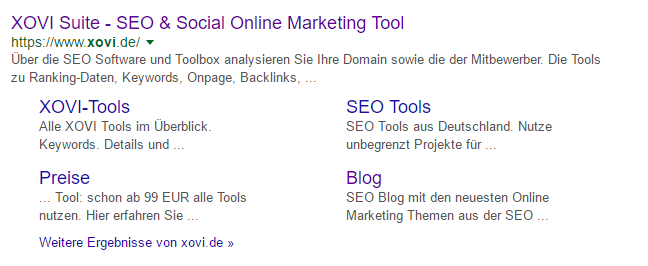The business world was a very different place when fledging internet search engine “BackRub” was launched in 1996. When it’s successor, “Google,” emerged on 15 September 1997, the unstoppable march of the search engine was set in motion – and it continues to gather pace.
From the very beginning, Google’s stated aim has been to provide the user with high quality search results which respond to a user’s search as accurately and as relevantly as possible. Of course, they quickly realized that Google’s ranking algorithm had its weaknesses and was open to manipulation, as SEO spamming techniques skewered search results. Soon, it wasn’t necessarily the most relevant pages which ranked highest but the best optimized.
To combat this, Google has constantly adapted and developed its algorithm in the form of updates which more often than not are named after animals. The “Google Zoo” has grown and grown, and we now present a summary of all Google updates to date:
21.12.2009 – Vince Update (Brand Update)
The Vince Update lent more weight to established brands. A user searching for “BMW” should see BMW at the top of the list.
April-May 2010 – May Day Update
Google carried out changes to its ranking algorithm in April-May 2010. The changes were rolled out worldwide and principally affected long-tail keywords – i.e., search terms consisting of more than two words.
June 2010 – Caffeine Update
A revamp of Google’s indexing systems – a caffeine-boost, in other words.
23.02.2011 – Panda Update

First rolled out in February 2011, the Panda Update was intended to ban qualitatively poor websites from Google’s index. In future, only quality, high-value content was to appear in search results, providing users with the best possible results.
But what does Google mean by “high-value content?” Ask yourself the following questions:
- Do you trust the information contained in this article?
- Was this article written by an expert or by someone with specific knowledge of this area, or is it superficial and shallow?
- Does the website feature duplicated, overlapping or irrelevant articles to similar topics with only slightly deviating keywords?
- Would you trust this website with your credit card details?
- Does this article contain grammatical, stylistic or factual errors?
- Does this website feature content which is genuinely interesting for its readers, or has content been produced purely to generate higher rankings?
- Does this article contain original content or information and independent reports, research and analysis? Or can this information be read elsewhere?
- Does this website have a significant unique advantage when compared to other similar pages?
- To what extent has this website’s content undergone adequate quality control?
- Does this content consider different points of view or is it clearly biased and partisan?
- Is the website considered a recognized source of information in its field?
- Does the site’s content mass-produced or has it been carefully cultivated from a range of different authors?
- Was this article produced with care and attention or does it look like it was put together sloppily?
- Would you trust health advice given on this website?
- Would you consider this website reliable if you saw it referenced as a source?
- Does this article deal with its subject thoroughly and comprehensively?
- Does this article feature meaningful analyses with sensible conclusions or original findings?
- Would you bookmark this article or share it with friends?
- Does this article contain too many adverts which distract from or even block content?
- Could you imagine reading this article in a print magazine, book or encyclopaedia?
- Are the articles on this website too short and too shallow?
- Was this website constructed with care and attention to detail?
- Would users complain when presented with this content?
(Source: https://webmasters.googleblog.com/2011/05/more-guidance-on-building-high-quality.html)
Over the years, there have been numerous Panda Updates:
#3: (2.1) 09.05.2011
#4: (2.2) 21.06.2011
#5: (2.3) 23.07.2011
#6: (2.4) 12.08.2011
#7: (2.5) 28.09.2011
#8: „Flux“ 05.10.2011
#9: (3.1) 18.11.2011
#10: (3.2) 18.01.2012
#11: (3.3) 27.02.2012
#12: (3.4) 23.03.2012
#13: (3.5) 19.04.2012
#14: (3.6) 27.04.2012
#15: (3.7) 08.06.2012
#16: (3.8) 25.06.2012
#17: (3.9) 24.7.2012
#18: (3.9.1) 20.08.2012
#19: (3.9.2) 18.09.2012
#20: 27.09.2012
#21: 05.12.2012
#22: 21.11.2012
#23: 21.12.2012
#24: 22.01.2013
#25: 14.03.2013
Panda Dance: 11.06.2013
Panda Recovery: 18.07.2013
Panda 4.0: 19.05.2014
Panda: 27.07.2015
The Panda algorithm has now been integrated into Google’s core algorithm, meaning there won’t be any more mini-updates. Since website evaluation now occurs in real time, there will be no more floods of penalties whenever small updates take place.
Expanded Sitelinks
Sitelinks were introduced on 29 August 2011 – usually displayed in response to brand queries as an extra addition to the standard search results. The most important sub-pages are listed directly beneath the main domain in order to provide the user with more comfort that they are in the right place. You can what XOVI’s sitelinks look like below. In October 2016, Google stopped allowing webmasters to influence their sitelinks by rating URLs. Google now determines sitelinks independently.

Freshness Update
Google wants to encourage and reward fresh content and rolled out its Freshness Update on 14 November 2011. It affected an estimated 35% of all search results.
Page Layout Update (Ads Above The Fold)
Google is no fan of websites which displays too much advertising “above the fold” – in other words, in the immediate, top part of a website. At the end of January 2012, the Page Layout Update relegated websites with too much “above the fold” advertising.
Further updates: 15.10.2012, 17.02.2014
Penguin Update

A day of horror for many webmasters and SEOs. Prior to 30 April 2012, random backlink placement could give a domain an enormous boost in search engine rankings. The quality of the links was irrelevant – it was all about quantity. This all changed with the Penguin Update, as Google declared war on unnatural link building and with it link buying and link selling. Webmasters who had built their success on such techniques saw their rankings collapse, whilst some domains were removed from Google’s index altogether.
Additional updates have followed which have further strengthened the criteria for good, natural links.
#2 (1.1): 25.05.2012
#3: 05.10.2012
#4 (2.0): 22.05.2013
#5 (2.1): 04.10.2013
Google announced the “final” Penguin Update on 23 September 2016 with the news that the Penguin algorithm would be integrated into Google’s core algorithm from now on. There would be no more Penguin Updates in future. But this doesn’t mean that the mechanics behind the algorithm won’t continue to develop.
What is meant by unnatural link building and what breaks the rules?
- Links with ‘hard’ anchor texts (e.g., “vacation”)
- Links from the footer (site-wide links in non-visible areas)
- Unnaturally created backlinks (e.g., commercial)
- Unnaturally quick backlink development (time-span)
- Links from link lists, contents pages and web catalogues
- Links from thematically irrelevant websites
Pirate Update
With the Pirate Update on 20 August 2012, Google moved against pirate websites which offer stolen content for download. Such sites can no longer be found in Google’s index.
A further update followed on 3 November 2014.
EMD Update (Exact-Match-Domain)
One useful tool for influencing search results was the use of so-called Exact Match Domains (EMDs). This involved creating domain names using exactly those keywords for which the website was optimized – e.g., “seo-tool.com”. The EMD update was rolled out on 1 October 2012 at the same time as a Panda update.
Hummingbird Update

“Hummingbird Update” was the name given to a new version of Google’s algorithm which was rolled out in August 2013. The aim of the update was to enable Google to better understand more complex search queries by playing greater emphasis on search intention. What exactly is the user looking for when he/she enters a keyword in the search bar? Are they looking to research a product or buy directly? In short, search became more “intelligent” as Google moved closer towards its aim of presenting users with the best possible answers to their queries. Despite the wide-ranging changes, no great ranking fluctuations or changes were registered.
Payday Loan
This update only affected domains relating specifically to short-term credit and pornography. Other sites were unaffected. The so-called Payday Loan update was first rolled out on 11 June 2013. An update followed at the end of May 2014.
Phantom Update
On 11 May 2015, SEOs across the world noticed significant ranking changes and fluctuations. Google initially denied that any algorithmic changes had taken place, only to later confirm that changes to the way the search engine evaluates “quality” had indeed been implemented, resulting in the fluctuations. The change to the core algorithm became known as the Phantom Update or Core Update.
Rank Brain
November 2015 saw further significant fluctuations in search engine results when Google announced that artificial intelligence (AI) was being used to determine user search intentions. Approximately 15% of all searches are new searches, conducted for the first time, meaning that Google is unable to rely on past experience data to determine the user’s likely intention. For this 15% (and later for the rest as well), Google introduced artificial intelligence to determine user intention and present them with the most suitable search results.
Conclusion
Since the creation of Google there have been a whole range of changes and updates to the algorithm which determines which search results we see online. This overview contains the most important updates of recent years and those which have had the greatest effects. According to Google, approximately 400 algorithm changes take place per year – that’s more than one per day on average! And Google wants to keep improving search results in future.
This is not going to make search engine optimization any easier – but it will certainly make it more exciting. Simple methods which worked well in the past are no longer viable but this doesn’t mean that SEO is “dead” – as some harbingers of doom like to claim. On the contrary, it means SEO is more demanding than ever before. We just need to adapt quicker.
